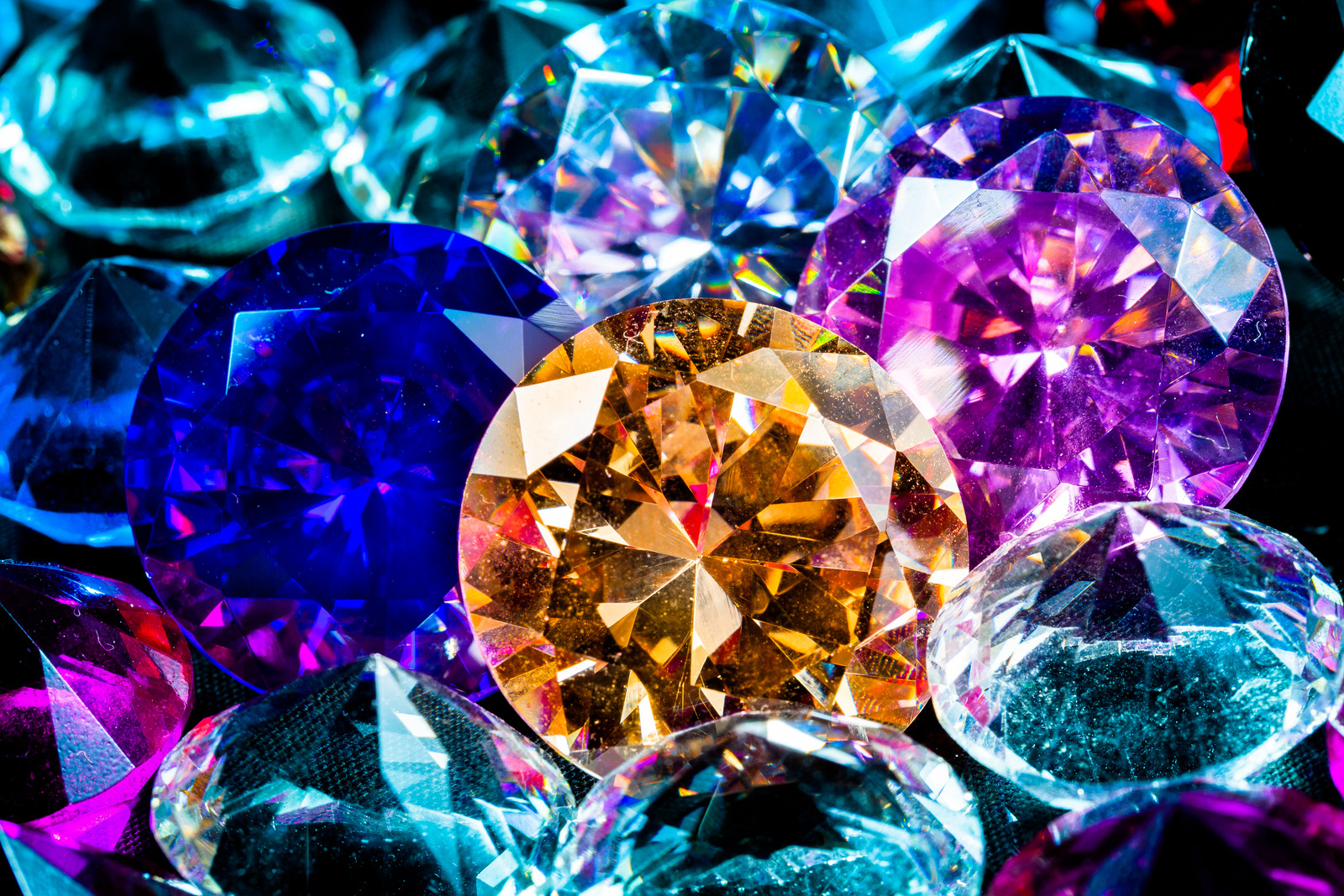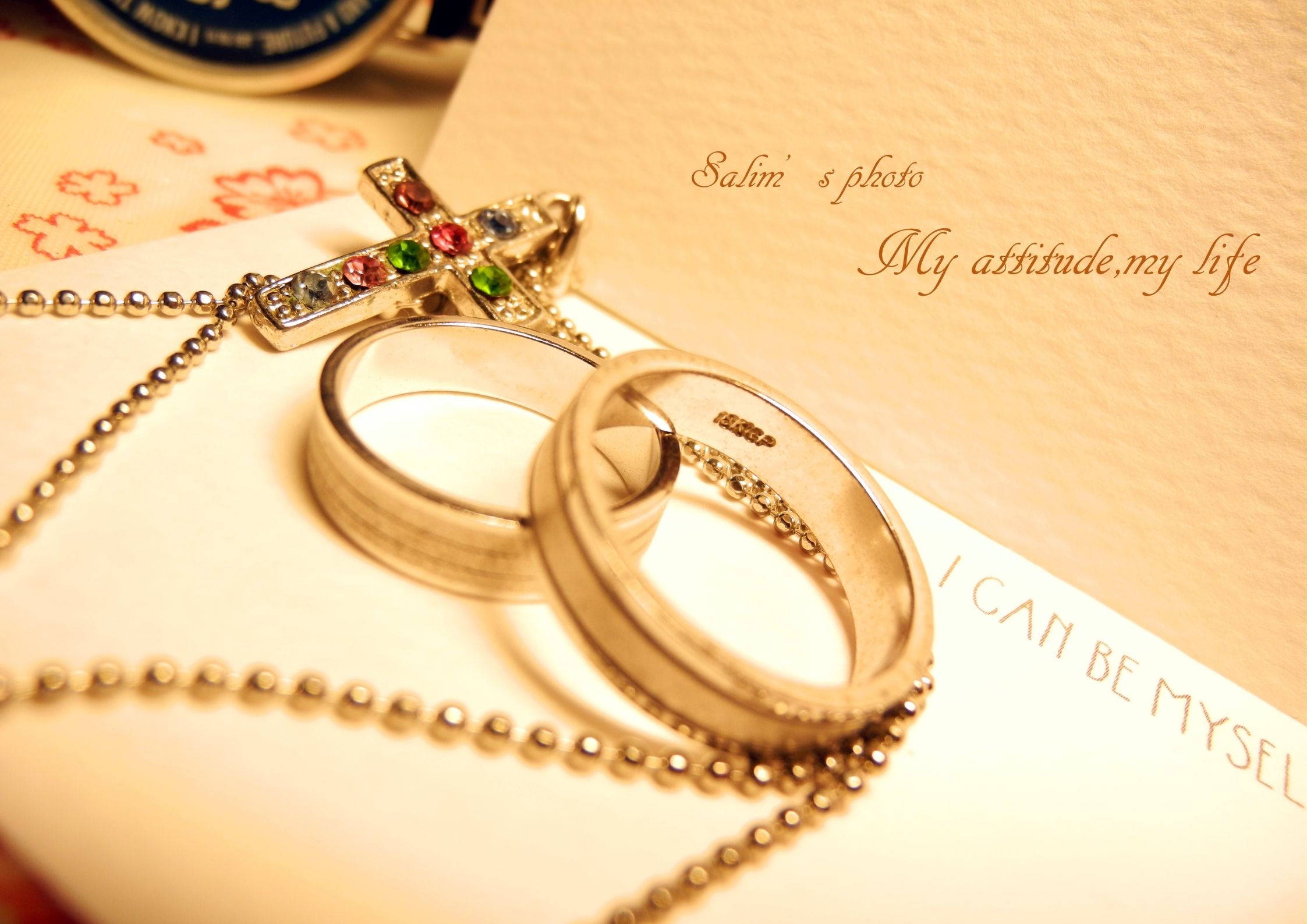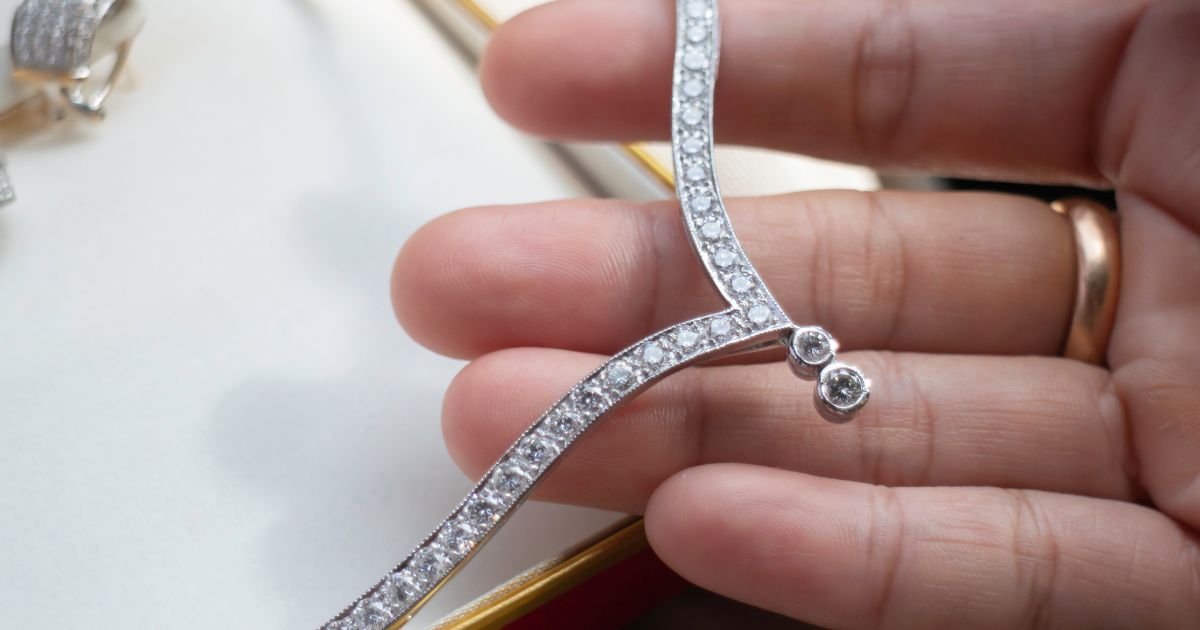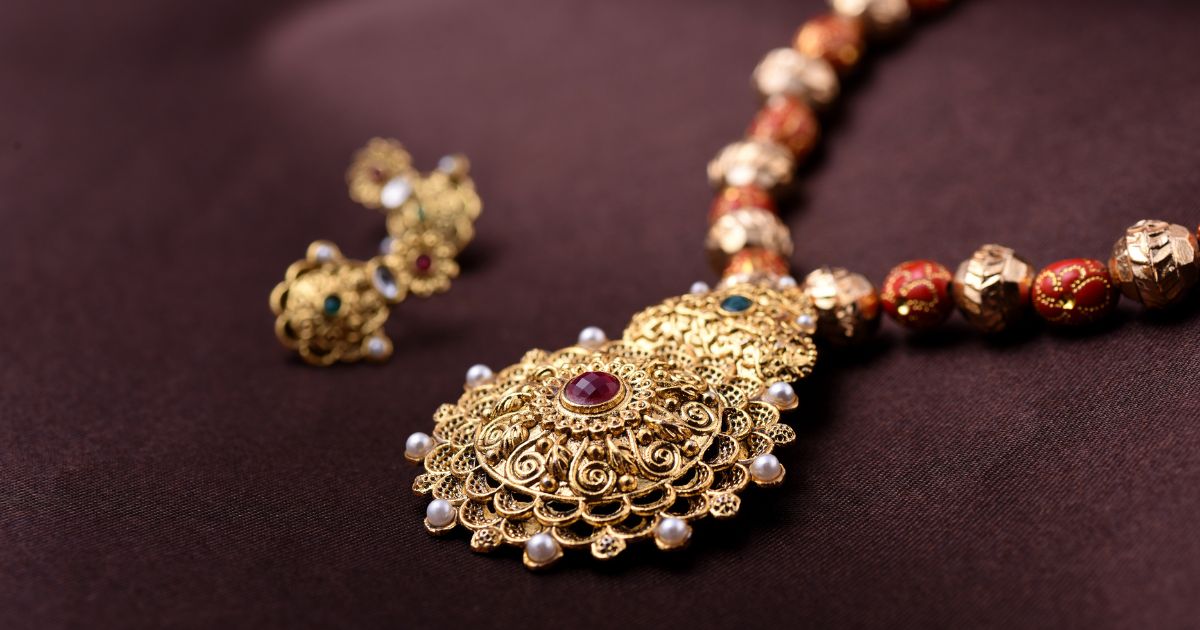Jewelry is not just about beauty and fashion, it’s also a fascinating world of history, science, and art. Gemstones, in particular, are nature’s own masterpieces, each with its unique story and features. In this blog, we will embark on an exciting journey to explore the dazzling universe of gemstones.
A Brief History of Gemstones
The allure of gemstones has captivated humans for thousands of years. Early civilizations used them for various purposes – from talismans and religious symbols to trade goods and status markers. The ancient Egyptians, for instance, were known for their intricate jewelry designs featuring a variety of gemstones like lapis lazuli and carnelian. Meanwhile, in ancient India, diamonds were so revered that laws prohibited lower classes from owning them.
Over time, the fascination with gemstones has only grown. Today, they are not just valued for their beauty, but also for their rarity, durability, and the painstaking craftsmanship involved in turning rough stones into polished jewels.
The Science Behind the Sparkle
Gemstones are minerals or other natural materials that can be cut and polished to create beautiful pieces of jewelry. They are formed deep within the Earth over millions of years under specific conditions of temperature and pressure.
What gives gemstones their stunning colors and sparkle is their chemical composition and crystal structure. For example, a diamond, which is pure carbon, sparkles because of its high refractive index, which bends light more than any other transparent substance. On the other hand, the rich blue color of sapphires comes from traces of iron and titanium in its composition.
But there’s more to gemstones than meets the eye. They also have unique properties, such as hardness, cleavage, and luminescence, which further add to their charm and value. Plus, no two gemstones are exactly alike, making each piece of gemstone jewelry a unique work of art.
In the following sections
So, ready to dive deeper? In the following sections, we will be exploring some of the most cherished gemstones – their history, sources, chemical compositions, and interesting properties. Plus, we’ll also share expert tips on how to select, care for, and purchase these precious stones. Let’s embark on this sparkling adventure!
The Fascinating World of Gemstones
Gemstones are a testament to nature’s ability to create beauty in the most unexpected places. Each gemstone is unique, with its own story, color, and properties. In this section, we will explore some of the world’s most cherished gemstones and their intriguing features.
Diamonds
Diamonds are perhaps the most famous of all gemstones, synonymous with love, marriage, and eternity. They are also the hardest known substance on Earth, making them extremely durable and perfect for everyday wear.
History of Diamonds
The history of diamonds dates back thousands of years, with the first recorded use of the stone occurring in India around the 4th century BC. Initially, diamonds were valued for their ability to refract light and were used as decorative items or talismans. As cutting techniques evolved, diamonds began to be used more frequently in jewelry, and by the Middle Ages, they had become a symbol of power and wealth.
Source and Composition of Diamonds
Diamonds are formed deep within the Earth’s mantle under conditions of extreme heat and pressure, and are brought to the surface by volcanic eruptions. The primary source of diamonds until the 18th century was India, but today, diamonds are mined in several countries, including Russia, Botswana, and Canada.
Chemically, diamonds are made up of carbon atoms arranged in a cubic crystal structure. This arrangement gives diamonds their remarkable hardness and high refractive index, which is responsible for their exceptional sparkle.
Properties and Uses of Diamonds
Diamonds are not just beautiful; they are also incredibly versatile. Because they are the hardest known substance, they are resistant to scratching and can retain their polish for a very long time. This makes them ideal for use in jewelry, particularly engagement rings, which are often worn daily.
Apart from jewelry, diamonds are also used in industrial applications due to their hardness. They are used for cutting, grinding, and drilling other materials. Additionally, because of their high thermal conductivity, diamonds are used in heat sinks for electronic devices.
Also, diamonds can come in various colors, from colorless to black, depending on the presence of impurities. For example, blue diamonds contain traces of boron, while yellow diamonds contain nitrogen.
Next section
In the next section, we will continue our exploration of gemstones by delving into the world of rubies, sapphires, and emeralds. Stay tuned!
Rubies
Rubies, often referred to as the “King of Gems,” are best known for their captivating crimson hue. They are one of the four precious stones globally, alongside diamonds, emeralds, and sapphires, and are incredibly durable – second only to diamonds.
History and Sources of Rubies
The history of rubies is steeped in myth and legend. Many ancient cultures believed that rubies held the power of life, attributing to them qualities of vitality, wealth, and protection. For centuries, Burma (now Myanmar) was the primary source of high-quality rubies, with its famed “pigeon’s blood” rubies sought after worldwide.
Today, while Myanmar still produces some of the world’s most beautiful rubies, significant deposits have also been discovered in other countries like Thailand, Sri Lanka, and Mozambique.
Chemical Composition and Properties of Rubies
Rubies are a variety of the mineral corundum, which is an aluminum oxide. The vibrant red color that rubies are famed for comes from the presence of chromium. The more chromium present, the stronger the red color. Additionally, the crystal structure of rubies can cause them to fluoresce, or glow, under UV light, adding an extra dimension to their allure.
In terms of hardness, rubies rate a 9 on the Mohs scale, making them extremely resistant to scratches and suitable for all types of jewelry.
Buying and Caring for Rubies
When buying rubies, color is the most critical factor to consider. The most valuable rubies exhibit a pure, vibrant red to slightly purplish-red. Clarity is also important; however, it’s worth noting that completely flawless rubies are exceedingly rare. Most natural rubies will have some inclusions, which are like fingerprints, proving their authenticity.
Caring for rubies is relatively straightforward due to their durability. However, they should be protected from harsh chemicals and extreme temperature changes. Cleaning can be done with warm soapy water and a soft brush.
Next Section
In the next sections, we will explore the enchanting worlds of sapphires, emeralds, and opals. So continue reading to uncover more gemstone magic!
Sapphires
Sapphires are known as the “Gem of Heaven” due to their celestial blue color. They are one of the four precious stones, alongside diamonds, emeralds, and rubies. Sapphires are not only beautiful but also incredibly durable, making them perfect for all types of jewelry.
History and Sources of Sapphires
The allure of sapphires spans centuries and civilizations. In ancient times, they were believed to protect against evil and harm. Kings and queens wore sapphires as a symbol of wisdom and purity.
Historically, the primary source of sapphires was Sri Lanka (formerly Ceylon), known for producing sapphires with a bright, cornflower-blue color. Today, sapphires are found in several countries, including Myanmar, Thailand, and Australia, which is known for its rich, dark blue sapphires.
Chemical Composition and Properties of Sapphires
Like rubies, sapphires are a variety of the mineral corundum. The presence of tiny amounts of other elements, mainly iron and titanium, gives sapphires their blue color. The more iron a sapphire contains, the darker its color.
Sapphires rate a 9 on the Mohs scale of hardness, making them second only to diamonds in durability. This hardness, coupled with their vibrant color, makes sapphires an excellent choice for jewelry, including engagement rings.
Buying and Caring for Sapphires
When buying a sapphire, the most important factor to consider is its color. The most valuable sapphires boast a medium to medium-dark blue hue. Clarity is also important, but like rubies, completely flawless sapphires are rare. Inclusions are common in sapphires and don’t necessarily detract from their beauty or value.
To care for sapphires, avoid exposing them to harsh chemicals or extreme temperature changes. Cleaning can be done with warm soapy water and a soft brush.
Next Section
In the following sections, we’ll venture into the world of emeralds and opals, unearthing more fascinating facts about these precious gemstones. Stay tuned!
Emeralds
Emeralds, with their mesmerizing green hue, have been captivating people for centuries. They are one of the four precious stones, alongside diamonds, rubies, and sapphires, and are cherished for their vibrant color and historical significance.
History and Sources of Emeralds
The history of emeralds is rich and colorful, much like the gemstone itself. Ancient civilizations, including the Egyptians and the Incas, revered emeralds, using them in jewelry, religious ceremonies, and burials. Cleopatra was famously fond of emeralds, and they remain a symbol of fertility, rebirth, and love.
Historically, the primary source of emeralds was Egypt, with the first known emerald mines dating back to at least 330 BC. Today, Colombia is the world’s leading producer of emeralds, accounting for about 70-90% of the world’s emerald supply.
Chemical Composition and Properties of Emeralds
Emeralds belong to the beryl family of minerals, which also includes aquamarine. Their distinctive green color comes from traces of chromium and sometimes vanadium. Unlike diamonds, rubies, and sapphires, emeralds are relatively soft, rating 7.5 to 8 on the Mohs scale. This makes them more susceptible to scratches and requires extra care when wearing and handling emerald jewelry.
Buying and Caring for Emeralds
When buying an emerald, color is the most crucial factor to consider. The most valuable emeralds exhibit a vivid, slightly bluish-green hue. Clarity is also important. However, emeralds almost always have inclusions, referred to as “jardin” (the French word for garden), which can actually enhance their value if they contribute to the stone’s unique character.
Emeralds require special care due to their relative softness. They should be protected from rough handling and sudden temperature changes. Cleaning should be done with warm soapy water, but ultrasonic cleaners should be avoided as they can cause damage.
Next Section
In the next section, we will delve into the fascinating world of opals, exploring their unique properties and how to care for them. So stay tuned!
Opals
Opals, with their unique play-of-color, are truly one of nature’s most fascinating gemstones. Unlike the other precious stones, opals can display all the colors of the rainbow in an iridescent, moving pattern that changes with the angle of observation.
History and Sources of Opals
Opals have been adored for thousands of years. The ancient Romans believed opals to be the most powerful and precious gemstone since they contain the colors of all other gems. The term “opal” is believed to originate from the Sanskrit word “upala,” meaning “precious stone.”
Australia is the world’s leading producer of opals, accounting for over 90% of the global supply. Other sources include Ethiopia, Mexico, and Brazil.
2.5.2 Chemical Composition and Properties of Opals
Unlike most gemstones, opals are not crystals but amorphous lumps of silica. Their unique play-of-color is caused by tiny spheres of silica arranged in a regular pattern, diffracting light to produce a spectrum of colors.
Opals are softer than many other gemstones, with a hardness rating of 5.5 to 6.5 on the Mohs scale. They also contain a significant amount of water (usually between 5 and 10 percent, but sometimes up to 20 percent), which can make them vulnerable to cracking if they dry out.
Buying and Caring for Opals
When buying an opal, the play-of-color is the most important factor to consider. The more colors an opal displays and the more intense the color, the more valuable the opal. Size, body tone (the background color of the opal), and transparency also influence an opal’s value.
Opals require special care due to their relative softness and water content. They should be protected from heat and harsh chemicals, and should not be allowed to dry out. To prevent opals from drying out, they can be stored in a sealed plastic bag with a damp piece of cotton or fabric. Cleaning should be done with a soft cloth or brush and warm soapy water.
Gemstone exploration
In our next gemstone exploration, we’ll delve into the world of pearls, garnets, and amethysts. Stay tuned for more fascinating facts about these beautiful gemstones!
Expert Tips on Selecting Gemstones
Selecting gemstones, whether for personal use or as an investment, can be a daunting task given the variety and complexity involved. Here are some expert tips to help you navigate this process:
Understand Your Needs and Preferences
Before investing in a gemstone, it’s crucial to understand why you’re purchasing it. Are you looking for a piece to wear daily, a gemstone for a special occasion, or as an investment? Your answer will significantly influence the type of gemstone you should choose.
Research the Gemstone
Knowledge is power when it comes to buying gemstones. Understand the properties of the gemstone you intend to buy, including its hardness, durability, care requirements, and common treatments. Also, familiarize yourself with the factors that influence its value, such as color, clarity, cut, and carat weight.
Choose the Right Color
Color is one of the most critical factors when selecting a gemstone. The most valuable gemstones are those with the most appealing colors. For example, the most sought-after emeralds are a vibrant, slightly bluish green, while the most prized sapphires are a medium to medium-dark blue.
Consider the Gemstone’s Durability
If you plan to wear your gemstone frequently, consider its durability. Hard gemstones like diamonds, sapphires, and rubies are more resistant to scratches and wear, making them suitable for everyday wear. Softer gemstones like opals and pearls require more care and are better suited for occasional wear.
Check for Treatments
Many gemstones on the market have been treated to enhance their appearance. Common treatments include heat treatment, oiling, and dyeing. While these treatments are generally accepted in the industry, they can affect the gemstone’s value, and any treatments should be disclosed by the seller.
Buy from a Reputable Dealer
Always buy gemstones from a reputable dealer who provides a detailed description and certification for the gemstone. This ensures you’re getting what you pay for and protects you from fraudulent practices.
Seek Professional Advice
If you’re unsure or overwhelmed, don’t hesitate to seek professional advice. A certified gemologist can provide valuable insights into the quality and value of a gemstone, ensuring you make an informed decision.
Expert tips
By following these expert tips, you’ll be well-equipped to select the perfect gemstone that meets your needs and preferences. Happy gem hunting!
Caring for Your Gemstones
Once you have selected and purchased your gemstones, it is essential to care for them properly to maintain their beauty and value. Here are some tips on how to keep your gemstones looking their best:
Regular Cleaning
Regular cleaning is vital to keep your gemstones shining. Use warm soapy water and a soft brush to clean most gemstones. However, some stones like opals, pearls, and emeralds require special care as they can be damaged by soap or sudden temperature changes. Always research the specific cleaning requirements of your gemstone.
Proper Storage
Store each piece of gemstone jewelry separately to prevent them from scratching each other. Soft pouches, jewelry boxes with separate compartments, or individual cloth wraps work well. Avoid storing gemstones in direct sunlight, which can fade some gemstones over time.
Avoid Harsh Chemicals
Avoid exposing your gemstones to harsh chemicals, including cleaning products, cosmetics, and perfumes. These can damage the surface of the stone and affect its luster. It’s a good rule of thumb to put your gemstone jewelry on last when getting ready and take it off first when you come home.Regular Professional Check-ups
Just like you would service a car, consider having your gemstone jewelry checked by a professional every year. They can check for loose settings, signs of wear, and give your pieces a professional clean.
Handle with Care
Gemstones can be delicate and prone to chipping and scratching. Be mindful when wearing and handling your gemstone jewelry. Remove them during activities that may cause damage, such as gardening, sports, or heavy lifting.
Mind the Hardness
Remember that not all gemstones are created equal in terms of hardness. Diamonds, for example, are much harder than softer gemstones like opal or pearl. This means they can scratch other gemstones if stored together.
Re-polishing and Repair
Over time, some gemstones may lose their polish or become scratched. In such cases, a professional jeweler can often re-polish the stone to restore its former luster.
Care tips
By following these care tips, you can ensure your gemstones remain beautiful and last for generations. Remember, each gemstone is unique and may require specific care, so always do your research or consult with a professional.
Purchasing Gemstones
Purchasing gemstones, whether for jewelry or as an investment, can be an exciting endeavor. However, it’s essential to approach the process with knowledge and care. Here’s a detailed guide on how to purchase gemstones:
Define Your Purpose
Before you start shopping, define why you’re buying the gemstone. Is it for a piece of jewelry you’ll wear daily, a special occasion piece, or as part of an investment strategy? Your purpose will guide your choice of gemstone, budget, and where you buy from.
Conduct Thorough Research
Research is key when purchasing gemstones. Familiarize yourself with the Four Cs (Color, Cut, Clarity, and Carat weight) that determine a gemstone’s value. Also, learn about the specific gemstone you’re interested in – its properties, common treatments, and market value.
Set a Budget
Given the wide range of gemstones and their varying prices, setting a budget is crucial. Remember, more expensive doesn’t always mean better. You can find beautiful gemstones at various price points.
Choose a Reputable Seller
Whether you’re buying online or from a physical store, choose a reputable seller. Look for sellers who provide detailed information about the gemstone, including its origin, treatment, certification, and return policy. Check reviews and ratings to gauge the seller’s credibility.
Inspect the Gemstone
Whenever possible, inspect the gemstone in person. Look for the intensity and uniformity of its color, check for any visible inclusions or flaws, and ensure the cut brings out its best features. If buying online, request high-resolution images and videos.
Ask for Certification
For valuable gemstones, ask for a lab certification. This document verifies the gemstone’s authenticity and provides detailed information about its attributes and any treatments it has undergone. Reputable labs include the Gemological Institute of America (GIA) and American Gem Society (AGS).
Negotiate
Don’t be afraid to negotiate the price. While not all sellers are open to negotiation, many are, especially in physical stores. Be respectful and realistic in your offer.
Seek Professional Advice
If you’re new to buying gemstones or making a significant investment, consider seeking advice from a certified gemologist or an appraiser. They can provide objective, expert advice and ensure you’re getting good value for your money.
Make an informed decision
By following these steps, you can make an informed decision when purchasing gemstones, ensuring you find a piece that you love and that suits your purpose and budget. Happy shopping!
Conclusion
In conclusion, the world of gemstones is as fascinating as it is diverse. From the dazzling array of colors to the intricate processes that form these wonders of nature, gemstones hold a unique allure. Whether you’re considering a purchase for aesthetic reasons, sentimental value, or investment purposes, it’s essential to approach the process with knowledge and understanding.
Firstly, be clear about your needs and preferences. Each gemstone has its unique attributes, so it’s important to choose one that aligns with your personal style or investment goals.
Secondly, educate yourself about the gemstone you’re interested in. Understand the factors that contribute to its value, including color, clarity, cut, and carat weight. Also, be aware of common treatments and how they can impact a gemstone’s value.
When it comes to purchasing, choose a reputable dealer and always inspect the gemstone closely, ideally in person. Ask for a certification from a reputable lab to verify the gemstone’s authenticity and quality. And don’t forget that negotiation is often part of the process, so don’t be afraid to discuss pricing.
Finally, once you’ve made your purchase, remember to care for your gemstone properly. Regular cleaning, proper storage, and professional check-ups will help maintain its beauty and longevity.
Gemstone brings you joy
In the end, the most important thing is that your gemstone brings you joy. Whether it’s the sparkle of a diamond, the deep blue of a sapphire, or the mystical play-of-color of an opal, the true value of a gemstone lies in the pleasure it brings. So, take your time, do your research, and enjoy the journey of finding your perfect gemstone.




